The evolution of the Commonwealth during the reign of Queen Elizabeth II
In her later years, Queen Elizabeth II was head of state for 15 members of the Commonwealth of Nations. Canadian historian, author and royal commentator, Carolyn Harris looks at the relationship between Britain’s longest-reigning monarch and the Commonwealth.

On 21 April 1947, the future Queen Elizabeth II celebrated her 21st birthday on her first royal tour outside the United Kingdom. King George VI, Queen Elizabeth (the Queen Mother) and their daughters Princess Elizabeth and Princess Margaret were spending two months in South Africa and what is now Zimbabwe on their first and last official overseas tour as a family of four.
In a speech broadcast on her 21st birthday, the princess affirmed her commitment to both lifelong public service and the Commonwealth, famously stating: ‘I declare before you all that my whole life, whether it be long or short, shall be devoted to your service and the service of our great imperial family to which we all belong.’
Over the course of Elizabeth II’s lifetime, the imperial family of colonies and self-governing dominions would evolve into the modern-day commonwealth of equal nations, and the monarchy would be instrumental in its continued cohesion and relevance going forward into the 21st century.
The monarchy and the evolution of the Commonwealth
The concept of the British Empire evolving into the Commonwealth began to develop in the late 19th and early 20th centuries as Canada (1867), Australia (1901), New Zealand (1907) and South Africa (1910) achieved the status of self-governing dominions within the wider British Empire. In 1884, the British Empire was first described as a ‘Commonwealth of Nations’ by British politician Lord Rosebery during a visit to Adelaide, Australia.
The first colonial conference, a forerunner of the modern Commonwealth heads of government meetings, took place in 1887 on the occasion of Queen Victoria’s Golden Jubilee (Gazette issue 25773). A decade later, representatives of the British Empire and dominions travelled to London to celebrate Queen Victoria’s Diamond Jubilee (Gazette issue 26947), highlighting the monarch’s role as sovereign of a global empire on which ‘the sun never set’. During the first half of the 20th century, successive monarchs would gradually move away from direct diplomacy with European monarchs (which was the focus of King Edward VII’s royal tours) to engagement with the wider British Empire and dominions, as demonstrated by the 1901 world tour of the Duke and Duchess of Cornwall and York (the future King George V and Queen Mary).
The development of new technologies increased the cohesion of the British Empire, and later the Commonwealth as well, allowing individual monarchs to engage directly with a global audience. Queen Victoria was the first British monarch to appear in photographs and newsreels, making her image familiar to audiences around the world. Inexpensive images of the Queen from newspapers or magazine supplements were a common feature in private homes. Lucy Maud Montgomery, the Canadian author of Anne of Green Gables, recalled: ‘In those days [the late 19th century] every home boasted a framed picture of “the Queen” – generally a luridly coloured chromo sent out as a supplement by a popular weekly.’ While Queen Victoria did not leave Europe over the course of her reign, the extensive world ours by her children and grandchildren made their images familiar throughout the British Empire.
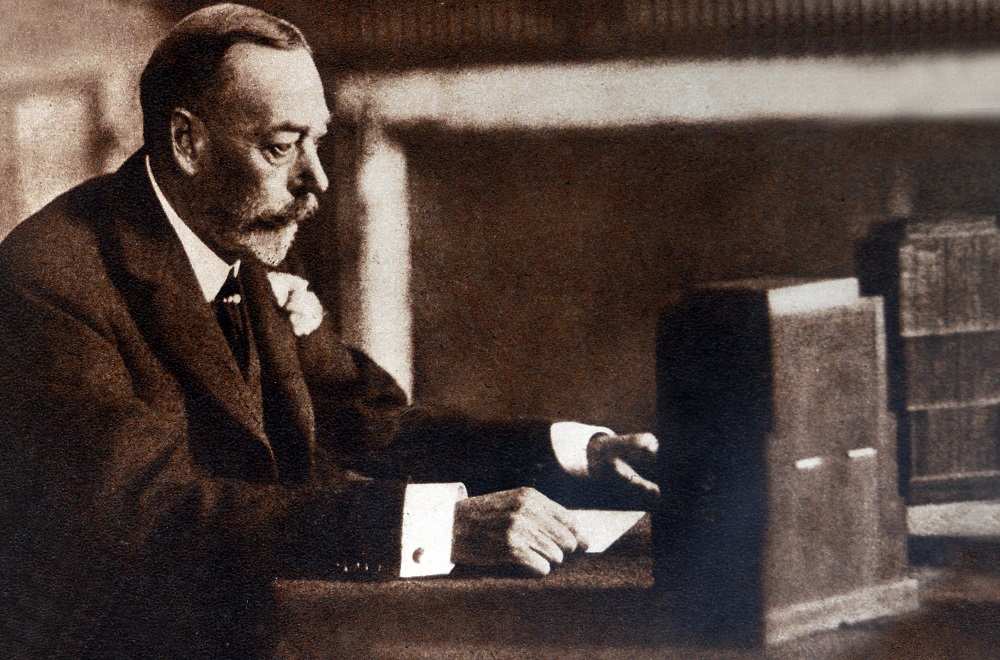
The advent of radio allowed the monarch’s voice to be heard around the world. In 1932, King George V delivered the first Christmas message, stating in an address (written by the author, Rudyard Kipling), ‘Through one of the marvels of modern science, I am enabled, this Christmas Day, to speak to all my peoples throughout the Empire. I take it as a good omen that Wireless should have reached its present perfection at a time when the Empire has been linked in closer union. For it offers us immense possibilities to make that union closer still.’
Importantly, Queen Elizabeth II’s accession to the throne in 1952 (Gazette issue 39458) coincided with the growth of television. The decision to allow BBC cameras into Westminster Abbey to film the coronation allowed the entire Commonwealth to share in the historic event, while the growth of air travel resulted in an unprecedented number of visitors from around the world descending on London to share in the popular celebrations. The Christmas message was first televised in 1957, allowing the global audience a glimpse of the library at Sandringham House and a collection of royal photographs. Today, the court circular, royal engagements and royal tours are documented on social media, unfolding in real time as part of the 24-hour news cycle. The accessibility of events concerning the monarchy in the wider world contributes to a sense of cohesion within the Commonwealth.
The Commonwealth during wartime
The diplomatic relationship between the United Kingdom and its Dominions changed with World War 1, accelerating the development of the modern Commonwealth. The future King Edward VIII noted during a tour of the western front that there were military personnel from Canada, Australia and New Zealand who ‘tended to assume that they had done all the serious fighting’ and there were calls from the Dominions for a greater amount of decision-making power in the war effort. The Imperial War Cabinet, which met over three sessions in 1917 and 1918, included representatives from Canada, Australia, India, Newfoundland (which did not become a province of Canada until 1949) and New Zealand, as well as the United Kingdom. The Dominions signed the Treaty of Versailles individually in 1919 (Gazette issue 31427) and became members of the League of Nations despite the opposition of other nations who viewed them as additional votes for the United Kingdom instead of distinct countries with their own national interests.
The interwar period saw the development of distinct crowns in the Commonwealth as individual dominions gained control over their own foreign policy. According to the Balfour Declaration issued at the 1926 Imperial Conference of British Empire leaders, the United Kingdom and its Dominions were ‘autonomous communities within the British Empire, equal in status, in no way subordinate one to another in any aspect of their domestic or external affairs, though united by a common allegiance to the Crown, and freely associated as members of the British Commonwealth of Nations.’ The declaration also recommended that governors general in the Dominions serve as representatives of the Crown alone, rather than the Crown and the British government. This began the process of the monarch serving as in the distinct capacity of sovereign of individual Commonwealth nations.
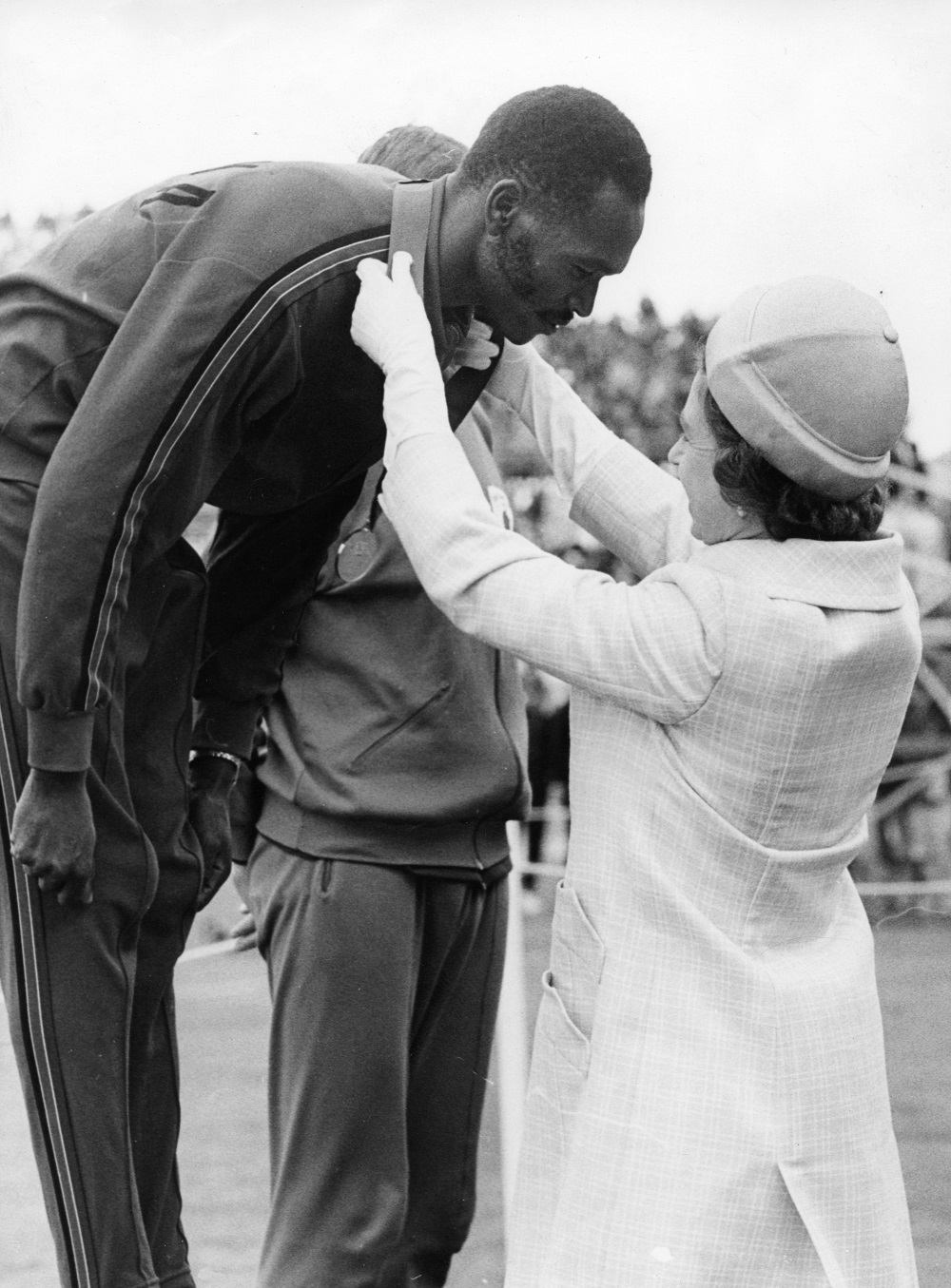
The first Commonwealth Games, originally known as the British Empire Games, took place in Hamilton, Ontario, Canada in 1930. Over the years, the Games have also been notable for the involvement of the royal family. In 1955, the Duke of Edinburgh became president of the Commonwealth Games Federation, the organising body of the Games. Elizabeth II, the honorary patron of the Commonwealth Games Federation, formally opened the Games in Edmonton, Canada in 1978, accompanied by the Duke of Edinburgh and her two younger sons, Prince Andrew and Prince Edward. The Commonwealth Games remain to this day one of the most well-known examples of collaboration and engagement between Commonwealth nations, noted for greater opportunities for sociability amongst the athletes, and for the inclusion of smaller nations and overseas dependencies in competitions.
A year after the first Commonwealth Games, the 1931 Statute of Westminster established the legislative independence of the self-governing Dominions of the former British Empire with an obligation for the realms to seek consensus regarding changes to the line of succession. This was the case in 2011, when the Commonwealth heads of government agreed in principle to the gender-neutral succession reforms that came into force in 2015.
Immediately after World War 2, King George VI planned to undertake a series of overseas tours to acknowledge the contributions of the Commonwealth nations during wartime. King George VI and Queen Elizabeth had completed a six-week tour of Canada with a brief visit to the United States just prior to the outbreak of hostilities in 1939 and intended to continue this practice of extensive overseas travel during the post-war years. The 1947 tour to South Africa provided a framework that would inform Commonwealth tours over the course of Elizabeth II’s reign. Princess Elizabeth learned much of the role of a constitutional monarch from the example of her father. The tour included elements that would be present in subsequent royal tours during her reign, such as traversing the country to visit both urban and rural regions; undertaking formal duties as head of state such as the opening of parliament; and meeting with people from all walks of life and recognising their accomplishments. King George VI wore a white naval uniform to stand out from the dark suits and uniforms of the officials who surrounded him, ensuring that as many people as possible would be able to recognise the monarch. The Queen went on to adopt a similar approach, choosing brightly coloured dresses and hats to allow herself to be seen from the back of assembled crowds.
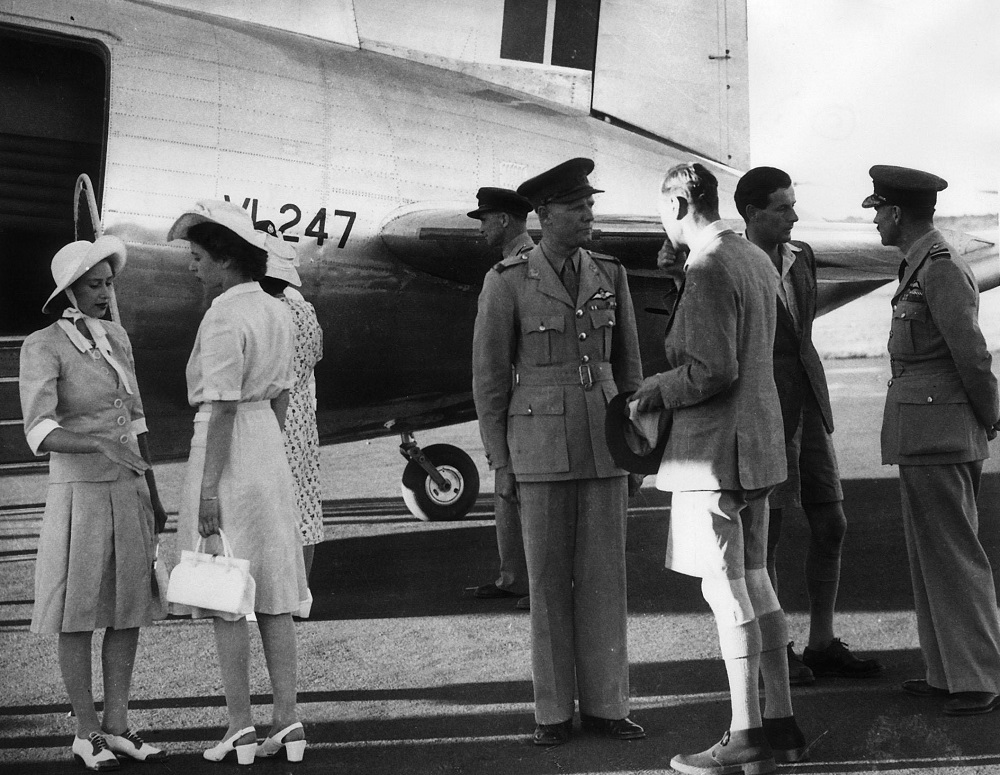
Queen Elizabeth II’s tours in the Commonwealth
Owing to ill health, the 1947 South African tour was George VI’s last extensive visit abroad. Princess Elizabeth and the Duke of Edinburgh represented the King on a tour of Canada in 1951, and the young royal couple were in Kenya in 1952, at the start of a planned journey to Australia and New Zealand, when they received news of George VI’s death on 6 February (Gazette issue 39458). They returned to the United Kingdom, where the princess would be crowned as Elizabeth II a year later (Gazette issue 39566).
The Queen once remarked, ‘I have to be seen to be believed’, and she has become the best-travelled monarch in history, making her relationship with the Commonwealth a priority throughout her reign. As such, it is perhaps no surprise that she had been present for key events in the national histories of the Commonwealth realms. In Canada, the Queen opened the St Lawrence Seaway in 1959 and patriated the constitution in 1982. In 1964, she also visited Quebec City at a time of increased separatist sentiment. There she faced protesters and debates in the media concerning the relevance of her role in French Canada. In contrast, the Queen was well received in 1967 when she came to Canada in honour of the country’s centennial, visiting Expo 67 in Montreal and famously riding the monorail.
From 1953 to 1954, she undertook one of the most successful royal tours in history, visiting more than 70 Australian cities and towns on the royal train in 1954. About 75 per cent of the Australian population saw the Queen and Duke of Edinburgh on this tour, prompting Prime Minister Robert Menzies to write in the Sydney Morning Herald: ‘It does not require much imagination to realise that when eight million people spontaneously pour out this feeling they are engaging in a great act of common allegiance and common joy which brings them closer together and is one of the most powerful elements converting them from a mass of individuals to a great cohesive nation.’
The same tour also included an earlier visit to New Zealand, where the Queen opened parliament and from where she broadcast her annual Christmas message in December 1953. As in Australia, three-quarters of the population saw the monarch in person during this tour. The Queen last visited New Zealand in 2002 as part of a series of Commonwealth tours to commemorate her Golden Jubilee.
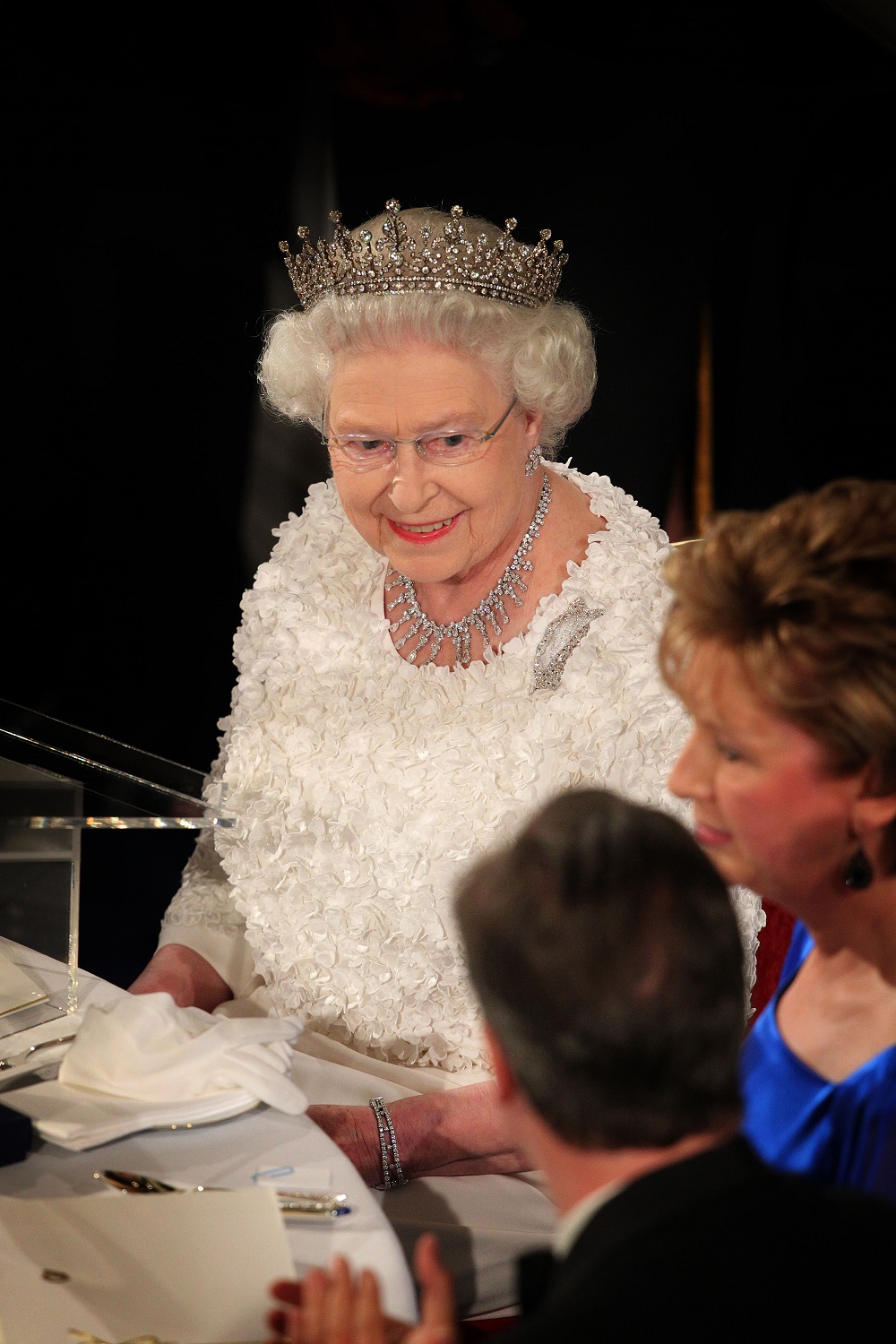
The decommission of the royal yacht HMY Britannia in 1997 reduced the number of extended royal visits to the realms of the Caribbean and South Pacific but the Queen and her family have been a regular presence in even the most remote South Pacific nations of the Commonwealth. Importantly, in the late 20th and early 21st centuries, the Queen’s diplomatic role as head of the Commonwealth has included expressions of regret for injustices that took place during British imperial rule. In 1997, the Queen laid a wreath at the Amritsar massacre memorial, which commemorates the hundreds killed in Jallianwala Bagh park in 1919 by British troops and observed a moment of silence.
The Queen has also adopted a similar approach during visits to former Commonwealth nations. In 2011, the Queen made a historic visit to Ireland where her official speech, delivered partly in Gaelic, included the words: ‘We can never forget those who have died or been injured, and their families. To all those who have suffered as a consequence of our troubled past, I extend my sincere thoughts and deep sympathy. With the benefit of historical hindsight, we can all see things which we would wish had been done differently or not at all.’ The speech was well received in Ireland and marked a historic moment in Anglo-Irish relations.
Elizabeth II’s role as head of the Commonwealth
No relationship with a nation demonstrated the Queen’s diplomatic influence as head of the Commonwealth more than that with South Africa. The enthusiasm over the 1947 royal tour was an experience shared by South Africans from various social and cultural backgrounds, demonstrating how the monarchy could serve as a unifying institution. Queen Elizabeth (the Queen Mother) noted the atmosphere of welcome amidst existing tensions in a letter to her mother-in-law Queen Mary, writing upon arrival in South Africa: ‘Everybody has been very kind here in Cape Town, and I think that the visit is going well. There are so many serious racial problems, but so far all sections of the community have been most welcoming.’
The fragile unity provided by the presence of the royal family did not last long. The year after the royal tour, the National Party in South Africa instituted a formal system of state-sanctioned racial discrimination and segregation known as apartheid, which precipitated South Africa’s withdrawal from the Commonwealth in 1961. The Queen would not return to South Africa until 1995, the year after the inauguration of Nelson Mandela as the country’s first post-apartheid president.
Modern Commonwealth heads of government conferences date from 1971 when Singapore’s president, Lee Kwan Kew, hosted the Commonwealth leaders. The Singapore Declaration of Commonwealth Principles stated: ‘The Commonwealth of Nations is a voluntary association of independent sovereign states, each responsible for its own policies, consulting and cooperating in the common interests of their peoples and in the promotion of international understanding and world peace.’ It provided a mandate for the modern Commonwealth. The meetings provided opportunities for the Queen to receive advice from her Commonwealth prime ministers in addition to her British prime minister, and she attended every Commonwealth heads of government meeting, from Ottawa, Canada in 1973, to Perth, Australia in 2011 as well as the 2015 meeting in Malta and the 2018 meeting in the United Kingdom.
Throughout her reign, the Queen employed subtle diplomatic influence in her opposition to apartheid in South Africa. At the time of South Africa’s departure from the Commonwealth, she was pictured in newspapers around the world dancing with President Kwame Nkrumah of Ghana. In the 1980s, there was widespread speculation that the Queen and Prime Minister Margaret Thatcher had different opinions concerning the implementation of economic sanctions in South Africa. At the Commonwealth heads of government meeting in Nassau, the Bahamas, in 1985, the Queen supported efforts by Commonwealth leaders from Canada, Australia, India, Zambia and Zimbabwe to draw up the Nassau Accord, which called upon South Africa to end both its apartheid policy and its occupation of Namibia. Former Canadian Prime Minister Brian Mulroney recalled in an interview with the Toronto Star: ‘[The Queen] and I became quite close during the fight to free Mandela. She was very unhappy, as you know, with the British government’s position, as articulated by Margaret [Thatcher].’
The Queen and Nelson Mandela became close friends from 1991, when she invited him to attend the banquet for the Commonwealth heads of government in Harare, Zimbabwe, before South Africa had rejoined the Commonwealth and the African National Congress party had come to power. The Queen returned to South Africa in 1995, with The New York Times reporting that Buckingham Palace officials considered the tour to be ‘one of the Queen’s most important visits, along with those she made to China and Russia’. The newspaper went on to report that ‘[the visit] was far more important for the South Africans, who equated the symbolism of a visit by their former coloniser only to the inauguration of Mr Mandela last year’. The Queen’s visit symbolised South Africa’s return to the Commonwealth and international recognition of the post-apartheid state.
When Mandela died in 2013, the Queen paid tribute to the former South African president. A statement from Buckingham Palace noted that ‘Her Majesty remembers with great warmth her meetings with Mr Mandela. He worked tirelessly for the good of his country, and his legacy is the peaceful South Africa we see today.’ By 2013, however, the Queen rarely travelled outside the United Kingdom and she was represented at Mandela’s funeral by the Prince of Wales, now King Charles III.
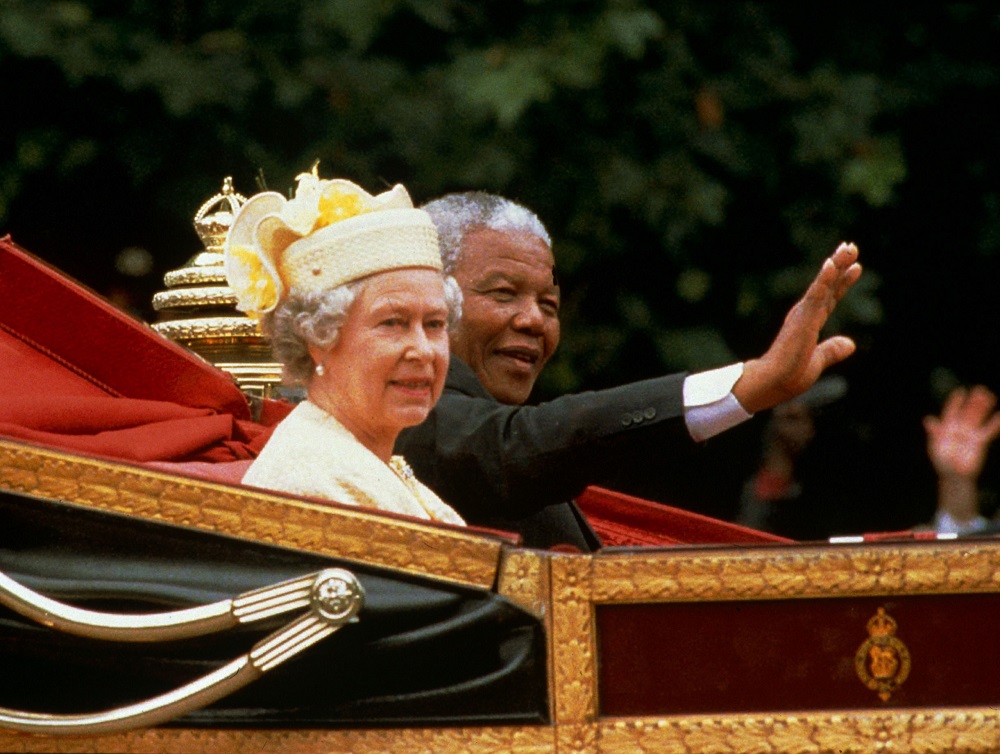
The changing role of the monarch in the Commonwealth
The nature of the Commonwealth has changed considerably since the reign of George VI. The original idea of the Commonwealth consisted of self-governing realms where the monarch served as head of state, represented by a governor general who acted on the advice of an elected head of government.
However, in 1950, India became a republic with a new constitution. The 1949 Commonwealth Prime Ministers Conference in London resulted in the London Declaration, which allowed India to remain part of the Commonwealth as a republic. The King strongly supported the continued presence of India in the Commonwealth, and Cold War politics provided an additional incentive to allow individual nations to remain within the Commonwealth after becoming republics. British Prime Minister Clement Atlee wrote to George VI in early 1949: ‘If India against her will is obliged to leave the Commonwealth, it would encourage Russia in her efforts to disrupt South East Asia.’ India remained in the Commonwealth, setting a precedent for other Commonwealth nations that became republics upon independence or transitioned from realm to republic.
The precedent set by India allowed other nations within the Commonwealth to become republics over the course of Elizabeth II’s reign. One of the most recent examples of a Commonwealth nation transitioning from realm to republic is Fiji in 1987, which nevertheless retained the Queen’s birthday as a national holiday until 2012. In 2021, Barbados transitioned from a constitutional monarchy to a republic within the Commonwealth. Today, there are 15 remaining realms which retain the Queen as head of state as well as head of the Commonwealth: the United Kingdom, Canada, Australia, New Zealand, Antigua and Barbuda, The Bahamas, Belize, Grenada, Jamaica, Papua New Guinea, Saint Kitts and Nevis, Saint Lucia, Saint Vincent and the Grenadines, the Solomon Islands and Tuvalu. The Commonwealth of Nations also contains 33 republics and a few countries that retain their own reigning families.
While the Queen remains personally popular in the Commonwealth realms, there were notable examples of republican sentiment in recent decades as the transition to a republic allowed a former realm to maintain a connection to the Queen as head of the Commonwealth even if she wasn’t the head of state. Australia, for example, held a referendum in 1999 on the question of whether the country should become a republic with a president appointed by parliament. The referendum resulted in a vote of 54.87 per cent in favour of retaining the monarchy but there was still widespread debate in the Australian media as to whether this result reflected support for the Queen as head of state or opposition to a form of republic that allowed for direct presidential elections. Republican sentiment in Australia has declined in recent years, especially among young people. The tours of Australia and New Zealand by the Duke and Duchess of Cambridge with an infant Prince George in 2014, and the Duke and Duchess of Sussex just after the announcement of the duchess’s pregnancy in 2018, were both extremely popular.
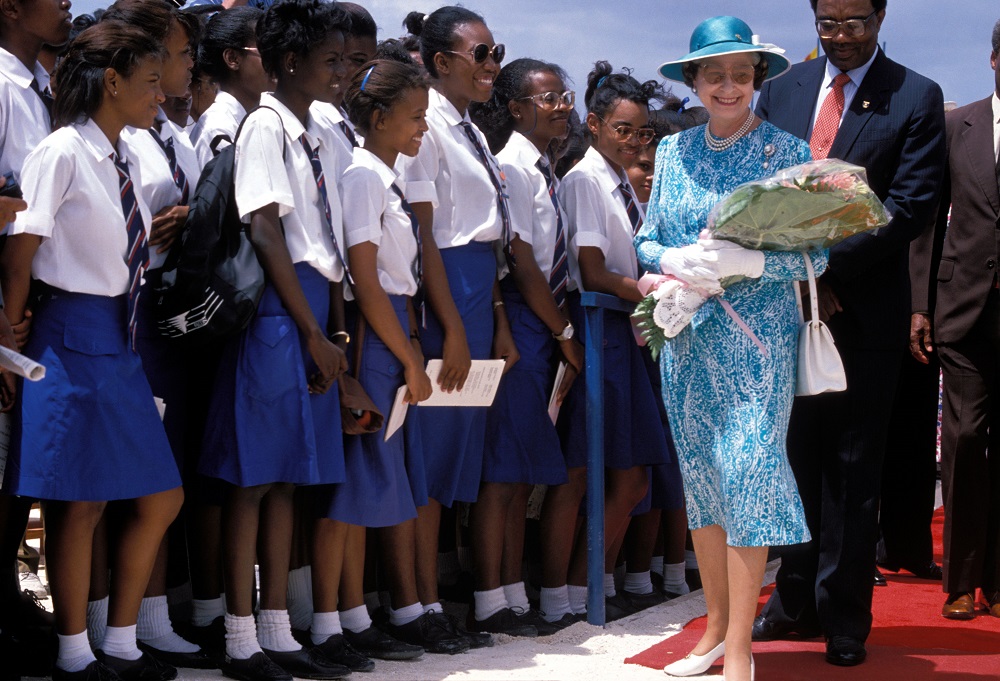 In the Caribbean, politicians in Jamaica have expressed support for the transition
from realm to republic in recent years. In 2012, around the time of the Queen’s Diamond
Jubilee (Gazette issue 60160), Prime Minister Portia Simpson-Miller of Jamaica expressed support for Jamaica’s
transition from realm to republic in time for the 50th anniversary in 2015 of the
country achieving independence. Her views combined a personal regard for the Queen
shared by many Jamaicans with the view that becoming a republic would mark the final
step in Jamaica’s independence from the former British Empire. In a speech at the
governor general’s residence the week after taking office, she stated: ‘I love the
Queen, she’s a beautiful lady […] But I think [the] time [has] come.’ Republican sentiment
at the time was informed by the 2003 introduction of a visa programme, which required
Jamaicans to pay fees to acquire the necessary documents to visit the United Kingdom,
and the continued presence of the British Privy Council as the highest judiciary body
for Jamaica. Despite these political and legal concerns, Simpson-Miller’s term ended
in 2016 without a transition from realm to republic. The removal of the Queen as head
of state would require the support of a two-thirds majority in the House of Representatives
and Senate as well as a majority in a popular referendum. Royal visits to Jamaica
around that time, including the Diamond Jubilee tour by Prince Harry in 2012, were
extremely well received and the republican option did not appear to have the necessary
popular support. That may change now that Barbados has become a republic. The 2022
Platinum Jubilee tour by William and Catherine, then Duke and Duchess of Cambridge
and now Prince and Princess of Wales, was less successful and prompted widespread
discussion and debate about the legacy of colonialism in the Caribbean.
In the Caribbean, politicians in Jamaica have expressed support for the transition
from realm to republic in recent years. In 2012, around the time of the Queen’s Diamond
Jubilee (Gazette issue 60160), Prime Minister Portia Simpson-Miller of Jamaica expressed support for Jamaica’s
transition from realm to republic in time for the 50th anniversary in 2015 of the
country achieving independence. Her views combined a personal regard for the Queen
shared by many Jamaicans with the view that becoming a republic would mark the final
step in Jamaica’s independence from the former British Empire. In a speech at the
governor general’s residence the week after taking office, she stated: ‘I love the
Queen, she’s a beautiful lady […] But I think [the] time [has] come.’ Republican sentiment
at the time was informed by the 2003 introduction of a visa programme, which required
Jamaicans to pay fees to acquire the necessary documents to visit the United Kingdom,
and the continued presence of the British Privy Council as the highest judiciary body
for Jamaica. Despite these political and legal concerns, Simpson-Miller’s term ended
in 2016 without a transition from realm to republic. The removal of the Queen as head
of state would require the support of a two-thirds majority in the House of Representatives
and Senate as well as a majority in a popular referendum. Royal visits to Jamaica
around that time, including the Diamond Jubilee tour by Prince Harry in 2012, were
extremely well received and the republican option did not appear to have the necessary
popular support. That may change now that Barbados has become a republic. The 2022
Platinum Jubilee tour by William and Catherine, then Duke and Duchess of Cambridge
and now Prince and Princess of Wales, was less successful and prompted widespread
discussion and debate about the legacy of colonialism in the Caribbean.
In Barbados, individual politicians have expressed support for a transition from realm to republic, a process that was completed in 2021. As in Jamaica, the impending celebrations of the 50th anniversary of independence in 1966 prompted republican sentiment in 2015. Opponents of Barbados becoming a republic expressed concern that the removal of the Queen as head of state would discourage British tourists from taking their holidays on the island. In contrast to Jamaica, the Caribbean Court of Appeal based in Trinidad and Tobago is the highest court of law available to Barbadians. At times, republican proposals did not appear to gain the broad popular support necessary for transition from realm to republic. Tours by individual members of the royal family have also been well received, as in Jamaica. The Queen has made five official visits to Barbados over the course of her reign and her children and grandchildren continue to tour the island nation, most recently the Prince of Wales and Duchess of Cornwall in 2019. The transition from realm to republic was achieved through a vote in the legislature without a popular referendum.
Republican sentiment is less politically significant in the other Commonwealth realms. In Canada, visits by members of the royal family prompt discussion in the media regarding popular support for the monarchy but the levels of support are highly variable depending on the nature of the question presenting in the polling data. Questions regarding personal regard for the Queen receive responses that imply greater support for the monarchy, while questions regarding the cost of security during royal visits receive responses more in favour of a republic. The necessity of all ten provinces agreeing to changes to the office of the Queen, as well as the centrality of the Crown to treaties with First Nations in Canada, means that there is not the same political support for republicanism that exists in some of the other Commonwealth realms. In New Zealand, the Crown serves an ongoing role in national unity. The Treaty of Waitangi between the Crown and the Maori people provides a foundational document of the state, and Maori rituals are included in the welcoming of royal guests.
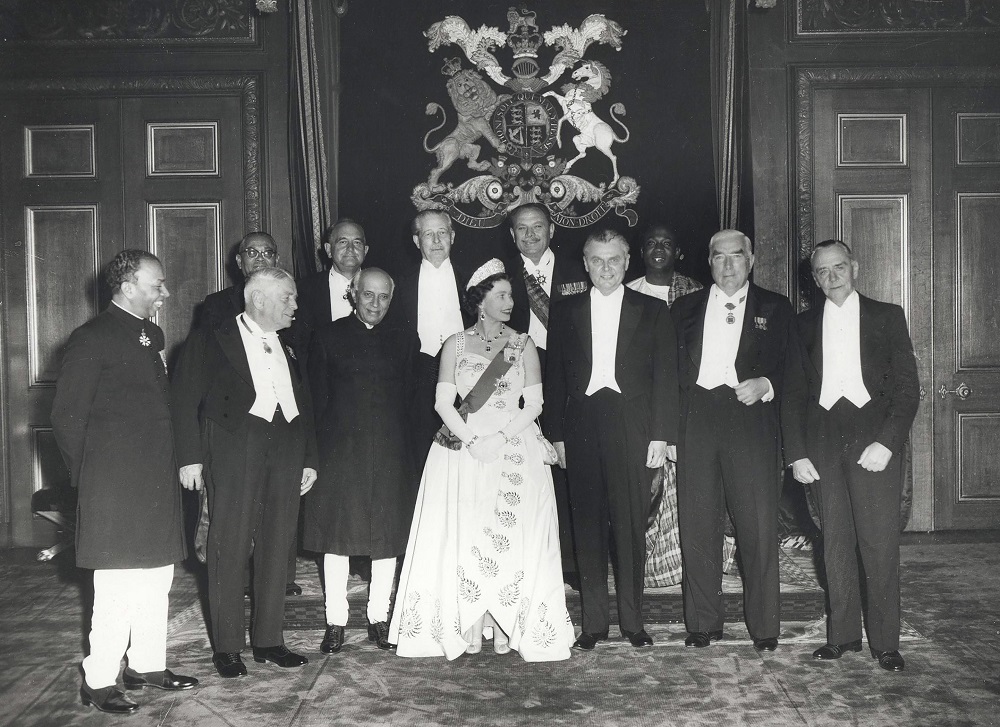
The future of the Commonwealth
In recent years, the new King assumed more and more of the Queen’s royal duties, especially regarding international travel to Commonwealth realms. In April 2018, the Commonwealth heads of government gathered in London and Windsor for their 25th meeting just before the Queen’s 92nd birthday. While the official themes of the meeting were prosperity, security, fairness and sustainability, the meeting attracted worldwide attention for its celebration of the Queen’s devotion to her role as head of the Commonwealth. At the meeting, it was confirmed that Charles would succeed Elizabeth II in the role.
In a speech welcoming the Commonwealth heads of government, the then-Prince of Wales affirmed his long-standing connections to Commonwealth leaders and close relationship with the organisation, stating: ‘I consider myself fortunate over the years to have been able to meet and talk with so many of the giants of the Commonwealth – Sir Robert Menzies [of Australia]; Kwame Nkrumah [of Ghana]; Sir Keith Holyoake [of New Zealand]; Jomo Kenyatta [of Kenya]; Pierre Trudeau [of Canada]; Kenneth Kaunda [of Zambia]; Julius Nyerere [of Tanzania]; Lee Kuan Yew [of Singapore] and many more. On the foundations they laid, the modern Commonwealth has a vital role to play in building bridges between our countries, fairer societies within them and a more secure world around them.’
In 2019, he and the now-Queen Consort completed an autumn tour of India, New Zealand and the Solomon Islands. During the tour, the royal couple highlighted Commonwealth initiatives such as the launch of the 2020 Queen’s Commonwealth Essay Competition for students under 18 years of age. The topic for the 2020 competition was ‘Climate Action and the Commonwealth’, demonstrating how Charles’s concern for environmental conservation and sustainable development will inform his role as head of the Commonwealth in the 21st century.
The Commonwealth was one of Queen Elizabeth II’s central priorities over the course of her long reign. She was present for key events in Commonwealth nations over the past seventy years and has exercised subtle diplomatic influence in her role as Head of the Commonwealth. The declining number of senior members of the royal family undertaking a full schedule of official engagements in the next reign, however, will reduce the visibility of the royal family in the Commonwealth in comparison to the present reign. The transition from one reign to another may result in realms that have previously considered the transition to a republican form of government to revisit this possibility, potentially changing the balance of the Commonwealth in the 21st century. However, the 2018 Commonwealth Heads of Government Meeting appears to confirm that the close relationship between the monarch and the Commonwealth will continue in the next reign.
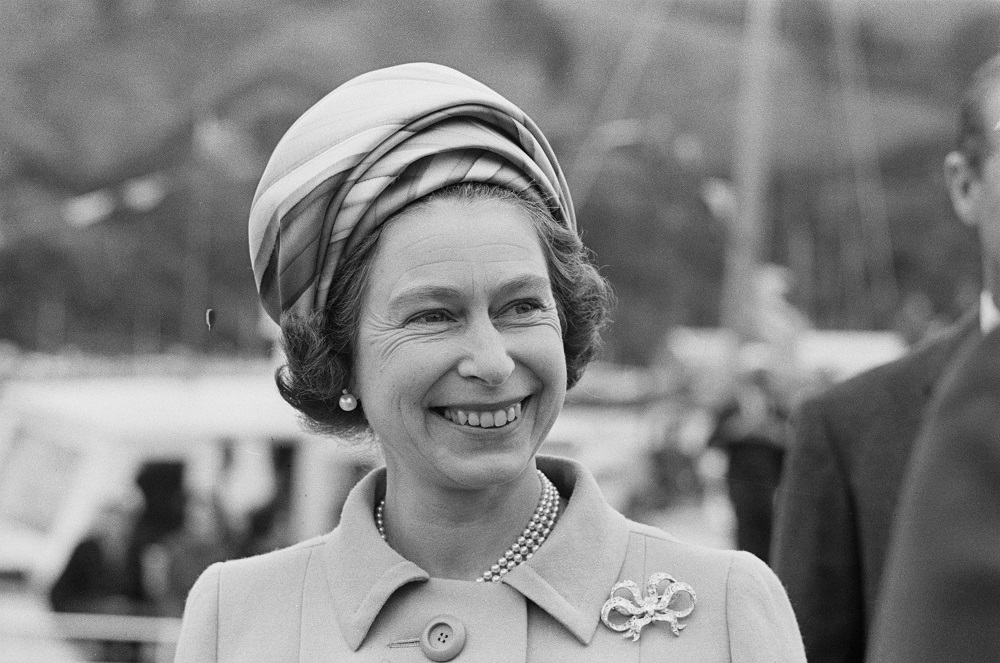
About the author
Dr Carolyn Harris is a historian, royal commentator and instructor in history at the University of Toronto’s School of Continuing Studies and the author of three books: Magna Carta and Its Gifts to Canada (Dundurn Press, 2015); Queenship and Revolution in Early Modern Europe: Henrietta Maria and Marie Antoinette (Palgrave Macmillan, 2015) and Raising Royalty: 1000 Years of Royal Parenting (Dundurn Press, 2017). She is the co-editor of the four volume English Consorts: Power, Influence, and Dynasty series (Palgrave Macmillan, 2022). Links to her writing and royal commentary are available on her website royalhistorian.com.
Images (in order of appearance):
Getty Images
World History Archive / Alamy Stock Photo
The Print Collector / Alamy Stock Photo
Trinity Mirror / Mirrorpix / Alamy Stock Photo
Peter Muhly / Alamy Stock Photo
Trinity Mirror / Mirrorpix / Alamy Stock Photo
parkerphotography / Alamy Stock Photo
Jasper Chamber / Alamy Stock Photo
Pictorial Press Ltd / Alamy Stock Photo
